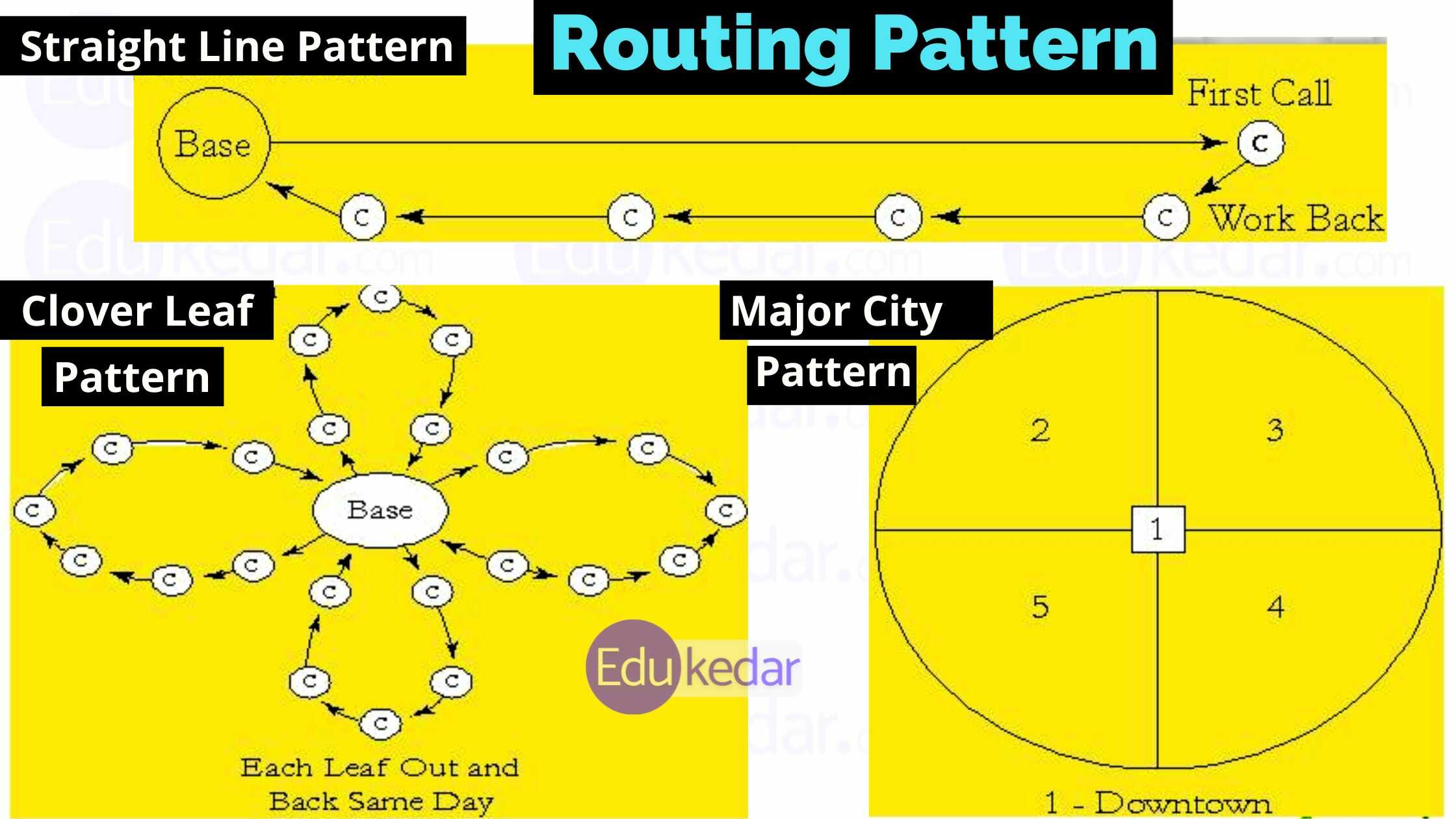A sales territory is a group of customers and prospects assigned to a salesperson. Here in this article, we have shared what is sales territory, its meaning, definition, objectives, importance, and types.
► What is Sales Territory?
Sales territory comprises a group of customers or a geographical area, the territory may or may not have a definite geographical boundary in some areas.
In other words, Sales territory represents a group of customer accounts, an industry, a market, or a specific geographical area.
◉ Sales Territory Meaning
A sales territory means a group of existing and potential customers assigned to a salesperson.
Most companies allow salespeople to geographic territories, consisting of current & prospective customers.
◉ Definition of Sales Territory
Sales territory is defined as an area where a specific group of present and potential customers are catered to by a salesperson, a group of salespeople, a branch, a dealer, a distributor, or a marketing agency at a given period of time.
Sales territories are defined on the basis of geographical boundaries in many companies.
In broader terms, it is a geographical area that identifies and serves a category or segment and a certain number of customers.
“A sales territory comprises a number of presents and potential customers, located within a given geographical area and assigned to a salesperson, branch or intermediary.” – Sapiro, Stanton & Rich (2011)
A sales territory is usually a specific geographic area that contains present and potential customers and is assigned to a particular salesperson. – Hair, Anderson, Mehta, & Anderson, (2009)
In other words,
- A sales territory refers to the customer group or geographical area.
- For which an individual salesperson or a team of salespersons hold responsibility.
- Territories can be defined on the basis of geographical region, sales potential, or a combination of factors.
► Objectives of Sales Territory
- Increase market and customer coverage
- Control sales expenses and time
- Enable better evaluation of sales force performance
- Improve customer relationships
- Increase sales force effectiveness
- Improve sales and profit performance
- To establish a salesperson’s responsibility
- To evaluate performance.
- To allow better matching of a salesperson to the customer
- To benefit salespeople and the company
► Designing Sales Territories
Sales territories put the responsibility on the sales manager to oversee the larger sales units within the organization. The development of Territories consists of various steps that are given below.
◉ Steps in Designing Sales Territory
- Selecting basic Control Unit
- Determine sales potential in each Control Unit
- Determine basic Territories
- Evaluate, revise if needed
- Customer contact plan
- Assign to territories
► Approaches to Allocating Territories
Basic territories are decided by various approaches, which two most used are as follows;
- Build-up method (Work-load)
- Break down method (Market)
A control unit is a geographical area base unnecessary & expensive for consumer products.
◉ 1. Build-up Method (Work-load Approach)
- Decide customer call frequencies
- Calculate total customer calls in each control unit
- Estimate the workload capacity of a salesperson to make tentative territories
- Develop final territories
The objective is to equalize the workload of salespeople.
◉ 2. Breakdown Method (Market Approach)
- Estimate company sales potential for the total market
- The forecast sales potential for each control unit
- Estimate sales volume expected from each salesperson
- Make tentative territories
- Develop final territories
The objective is to equalize the sales potential of territories.
Must Read :What is Sales Budget?
◉ Assigning Sales Territories to Salesperson
Sales Managers assign sales territories by considering two main criteria.
- Relative Ability of Salespeople based on key evaluation factors.
- Salesperson’s effectiveness in a territory.
1. Relative ability of Salespeople based on key evaluation factors:
- Product knowledge
- Market knowledge
- Past sales performance
- Communication Selling skills
2. Salesperson’s effectiveness in a territory
- Decided by comparing the social, cultural, and physical characteristics of the salesperson with those of the territory
- The objective is to match the salesperson to the territory
► Types of Sales Territory
- On the basis of Geographical area
- On the basis of Customer types
- On the basis of Product types
► Routing in Sales Territory
Routing or Sales territory route is a travel plan used by a salesperson for making customer calls in a territory.
Reasons for routing;
- Reduction in travel time and cost
- Improvement in territory coverage
◉ How to Setup a Routing plan in Sales Territory?
The steps in the procedure of setting up a routing plan are as follows;
- Identification of current and prospective customers on a territory map.
- Classifying each customer into high, medium, or low sales potential.
- Decide call frequency for each category of customers.
- Build route plan around locations of high potential customers.
- Computerize mathematical models and develop final route patterns.
Commonly used routing patterns are given below;
► Route Pattern of Sales Territory

The route of the territory affects the sales expenses and the ease of sales coverage. It also helps a salesperson to spend less time on travel and keeps the salesperson working hard. The three popular territory shapes used in the Indian market are listed below;
- Straight Line Pattern
- Clover Leaf Pattern
- Major City Pattern
Must Read :What is Sales Forecasting?
► Examples of Sales Territories
- In the case of FMCG products, the number of sales territory is large, as these products are consumed more.
- In the case of premium segment cars like Audi, and BMW, a complete state can be a single sales territory.
◉ Activities involve in Sales Territory Management
- To maintain trade relations or dealer relations in the case of consumer durables and automobiles.
- To identify the potential business so that proper sales planning can be done.
- Coverage of the market so that all the potential customers are touched say in the case of Pharma the total no. of doctors in a given area and the number of visits made by Medical representatives.
- Deciding how and what type of report needs to be prepared so that sales control.
- A decision regarding the size of the territory.
► Advantages of Sales Territory
- Increase Market share and better customer coverage
- Better Evaluation of sales force
- Efficient distribution of workload among salespeople.
- A convenient way to evaluate the performance of salespeople.
- A territorial design brings more clarity and focuses on the sales targets to be achieved.
- The sales force can build higher sales through up-selling and cross-selling to the same set of customers.
- Customer service improves over a period of time.
- Helps understand customers’ current and latent needs.
- Helps salespeople to generate a better valve from the customers.
- An effective territorial design helps to integrate the selling efforts with other marketing and promotional functions in the territory.
- Control selling expenses
► Disadvantages of Sales Territory
- May not prove good in regions where a personal relationship is required rather than a professional approach.
- Organizations with vast geographic areas and large customer distribution with a lower density in any specific block, firms using telemarketing and internet marketing as tools, do not plan territories on the basis of geographic division.
- Small firms, particularly firms with single salespeople do not establish sales territory.
- Highly sophisticated and technically complex products are sold through sales teams’ systematic effort.
- Organizations sell products like insurance, fixed deposits, and other investment products through personal acquaintances of salespeople.
- Salespersons get demotivated due to restrictions on the territory.
- Management of the company may not be aware.





